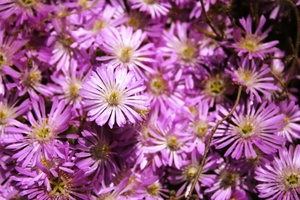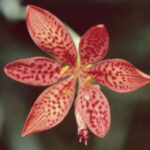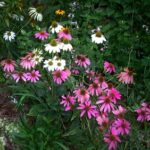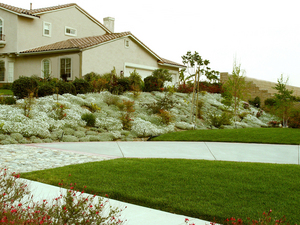Description of Asters
Asters are beautiful flowers that have lovely fringed petals. Some varieties of asters are annuals, but most asters are perennials, which means they come back year after year. Some asters look a lot like miniature daisies, and they are every bit as charming. Other varieties of asters have a single row of fringe-like petals. The petals of asters appear to be very delicate since they are narrow and fine, and although asters appear to be fragile flowers, there are very hardy varieties to choose from. Asters come in a wide variety of colors, and they are available in many different shades. You can find asters in various shades of pink, white, mauve, blue, purple, and red. There are numerous varieties and colors of asters, so you can be sure there are asters that will coordinate well with your unique garden or flower bed.
Depending on the variety, asters grow to a height ranging between sixteen and twenty-four inches. Asters produce blooms for weeks at a time, and they are a wonderful choice for anyone wanting a beautiful flower that will create drama and add uncomparable beauty to their yard or garden.
Where to Plant Asters
Asters can’t tolerate very cold conditions, and frost can cause a considerable amount of damage to their sensitive flowers and foliage. Asters are best suited for hardiness zones four through eight, and they should be planted in a location that provides a break from the wind.
Asters require well-drained soil and lots of sunshine, so plant your asters in an area that receives full sun throughout most of the day. Consider choosing a location for planting asters that’s easily visible from your home. Asters are favorite flowers of many types of beautiful butterflies and hummingbirds, and if you plant your asters in a visible location you can enjoy watching them flitter and glide from flower to flower.
Planting Asters
Add compost or other organic material to your soil if necessary weeks in advance of planting your asters. Even if your soil is fine in texture, compost and organic material is beneficial to asters since it adds beneficial nutrients that will naturally enhance growth and improve the overall health of your asters.
Aster seeds should be planted in early to mid spring, and their tiny seeds should be lightly covered with loose well-conditioned soil. Potted nursery asters or seedlings can be planted and successfully grown in mid summer.
Growing and Caring for Asters
When your asters have become well established, feed them with water-soluble plant food every other week. Follow product label instructions carefully, and apply the fertilizer accordingly.
Asters require regular watering, and a soaker hose is the best method to use. Avoid splashing the leaves and flowers with ground water. Splashing leaves with ground water can spread diseases common to asters.
If you plan on growing asters annually, plant them in a different location each season. This will help aid in the prevention of viral diseases asters are prone to contracting.
Sap-sucking insects carry diseases that sometimes afflict asters. If the blooms of your asters become distorted or green, this may be due to a few diseases known to asters. Virescence and a disease commonly called “big bud” cause these symptoms in asters. If an aster stops growing at a particular point, the problem may be due to broad bean wilt. These problems can’t be remedied, and asters with these symptoms should be destroyed and removed from your yard or garden.
Uses for Asters
Asters make beautiful cut flower arrangements and breathtaking bouquets. Asters also look lovely when paired with fresh babies’ breath and lacy green ferns or other flowers that compliment the matchless beauty of asters.






